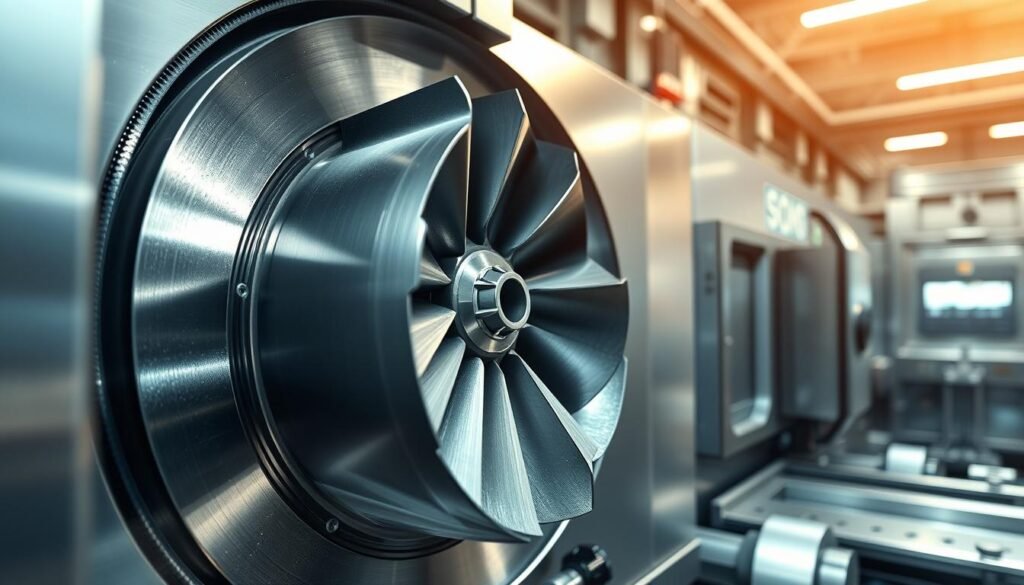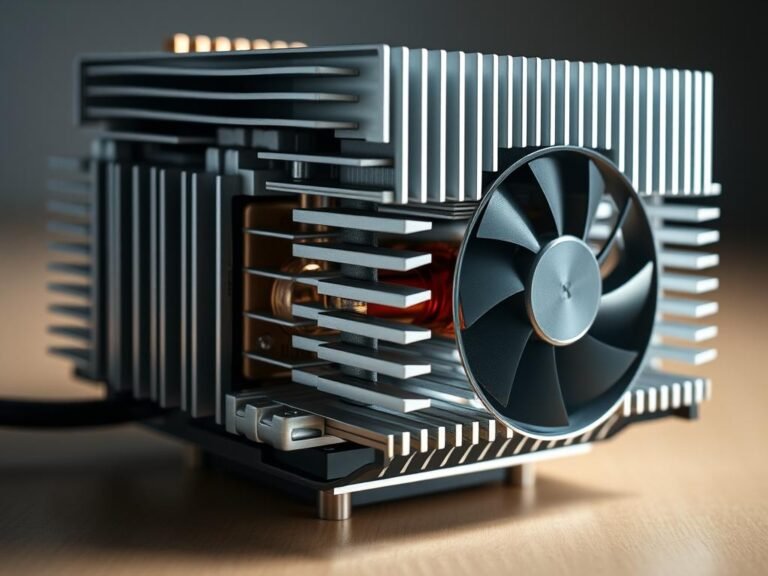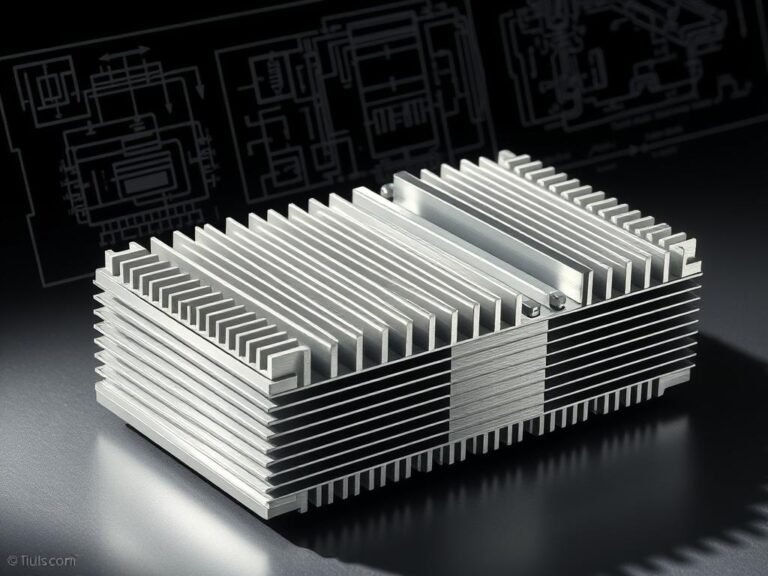The CNC turning technology revolutionizes the modern manufacturing industry with its precise computer-controlled manufacturing. professional workshops use CNC lathes to produce complex metal parts with the highest accuracy.
In this advanced manufacturing method, workpieces are processed through computer-controlled movements. The CNC lathe enables extremely precise shaping and processing of various materials such as metals, plastics, and composites.
The technology allows engineers and manufacturing specialists to produce highly complex components with minimal human intervention. In doing so, CNC turning technology guarantees consistent quality and repeatability.
Kernel insights
- Precise computer-controlled manufacturing
- High manufacturing accuracy
- Processing various materials
- Minimal manual intervention
- Consistent product quality
Materials for CNC turning
CNC turning enables the machining of various materials with the highest precision. Material selection plays a crucial role in the quality and properties of the final product. Modern CNC turning of metals, plastic machining, CNC and composite materials turning require specific technical understanding.
Metals: Precision and Stability
Metallic materials form the core of CNC turning machining. Typical metals include:
- Aluminum – lightweight and corrosion-resistant
- Stainless steel – highly durable and wear-resistant
- Brass – good machinability properties
- Titan – extremely durable
Plastics: Versatility and Lightness
Plastic processing CNC offers unique possibilities for lightweight and complex components. Key plastics are:
- Polyethylene (PE)
- Polypropylene (PP)
- Polyamide (PA)
- PEEK – high-temperature resistant
Composite materials: Innovation and performance
Composite materials turning requires special techniques. These materials combine different components for optimal properties.
| Composite material | Main features | Typical applications |
|---|---|---|
| Carbon fiber reinforced plastics | Very lightweight, high strength | Aerospace |
| Fiber-reinforced plastics | Good electrical insulation | Electronic components |
The selection of the right material ultimately determines the quality and functionality of the turned product.
Shapes through CNC turning
CNC turning enables the production of precise and complex geometries with the highest accuracy. The technology allows the manufacturing of various component shapes that are critical for different industrial applications.

Rotation-symmetric CNC parts
Rotationally symmetric CNC parts are the core competence of turning processes. These components are characterized by perfect symmetry around a central axis. Typical examples include:
- Waves
- Axes
- Pipes
- Cylinder
Cylindrical shape CNC turning
In cone shapes, CNC turning uses special techniques to produce precise conical geometries. The tool movements enable the production of:
- Bevel gears
- Threaded pin
- Conical connecting elements
Multi-sided profile turning process
The polygonal profile turning process allows the production of complex geometric shapes with multiple edges. Through precise programming, the following profiles can be manufactured:
| Profile | Scope of application |
|---|---|
| Hexagon | Mechanical engineering |
| Hexagon | Transmission technology |
| Polygonal shapes | Special machinery construction |
The versatility of CNC turning enables the production of complex geometries with the highest precision and repeatability.
Applications of CNC turning
CNC turning is a versatile manufacturing technique that has gained critical importance in numerous industries. The precision and flexibility of this technology enable the production of complex components for various applications.
Kfz-Teile
CNC-machined automotive parts play a central role in modern vehicle manufacturing. The production of precise engine components, axles, and fasteners requires the highest accuracy.
- Crankshaft
- Steering components
- Brake system parts
turbine blades
The turbine blade manufacturing demands the highest precision and material quality. CNC turning enables the production of extremely complex aerodynamic profiles.

Precision bearings and fastening elements
Precision bearings CNC are manufactured with the utmost accuracy. Screws and nuts also require the highest manufacturing standards.
| Storage type | Tolerance | Scope of application |
|---|---|---|
| Ball bearing | ±0.01 mm | Electric motors |
| Thrust ball bearing | ±0.005 mm | Automotive |
Electronic components
Electronic components turning requires micrometer precision. complex components for communication and computer technology are manufactured using CNC technology.
- Connector
- Contact pins
- Precision adapter
Advantages of CNC turning
CNC turning has established itself as a key technology in modern manufacturing industry. Precision CNC turned parts offer companies crucial advantages that traditional manufacturing methods cannot achieve.
Highest precision and repeatability
The efficient CNC manufacturing enables unparalleled accuracy. Machine processing achieves tolerances in the micrometer range, far surpassing human capabilities.
- Constant quality in every production
- Minimal deviations between individual workpieces
- Reproducible results with the highest reliability
Tight tolerances turning machining
The tight tolerances turning machining allows extremely precise manufacturing processes. Complex industrial components require absolute dimensional accuracy, which only modern CNC technologies can guarantee.
Complex CNC contours
CNC turning makes manufacturing of complex CNC contours Simple. Geometrically complex workpieces can now be manufactured precisely and efficiently, which was previously considered impossible.
Speed and efficiency
The technology revolutionizes production processes through unmatched speed. Automated procedures significantly reduce manufacturing times and increase overall efficiency of industrial manufacturing processes.
Conclusion on CNC turning
The future of CNC turning technology shows a rapid development in the industrial manufacturing world. Modern production processes are increasingly characterized by highly precise and automated manufacturing methods, where CNC turning plays a key role. The advancing digitalization enables increasingly complex and efficient machining techniques.
Innovations in turning machining drive technological advancement. Companies like Siemens and DMG Mori invest heavily in research and development to continuously improve the precision, speed, and flexibility of CNC lathes. Small tolerances and highly complex geometries are thus becoming increasingly precise and cost-effective to produce.
CNC turning Industry 4.0 means more than just technological advancement. It is about intelligent, connected manufacturing systems that elevate efficiency, quality, and profitability to a new level. Adaptive manufacturing technologies that self-optimize and adjust production processes in real time will become standard in modern industrial operations.
The importance of CNC turning for modern manufacturing will continue to grow. Companies that invest early in these technologies will gain a decisive competitive advantage and be able to respond flexibly to future challenges in the global manufacturing industry.


